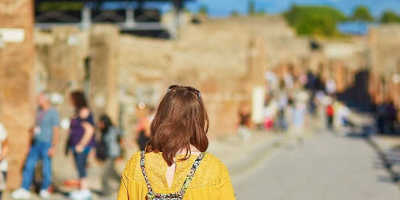A Newly Discovered Erotic Fresco Unearthed In Pompeii
In November 2018 archaeologists discovered a new erotic fresco relating to a renown Greek myth that inspired artists for centuries
The historic city of Pompeii is famous throughout the world. Known for its tragic demise and its natural preservation after thousands of years underground. Archaeologists have unearthed incredible sights, including ancient buildings, traditional artefacts, and even human remains. However, they are still not done, with newly discovered pieces found every few years. Including the most recent unearthing of a fresco found in an ancient bedroom.
However remarkable this discovery is, the fresco’s illustration is an unusual sight; depicting a woman having sex with a swan.
The Legend
The fresco is inspired by a classic Greek myth about the Spartan Queen Leda, who was impregnated by Zeus (known as Jupiter in Roman mythology.) Leda was the daughter of Thestios, the King of Pleuron. She was known to be stunningly beautiful and was wed to the King of Sparta, Tyndareus as soon as she became of age. Her beauty captivated Zeus, the god of thunder and ruler of Olympus, often spying on her from his throne above. Being a mortal woman and a married one at that, Leda refused Zeus’s advances, which led him to deceive her. Transforming himself into a swan, Zeus came to Leda looking for protection from a pursuing bird. In her innocence and believing the swan needed protection, Leda took the swan in her arms. The next part of the story has different versions. Some say Zeus lay next to Leda and impregnated her, whilst others say he raped her. This act of deception is not the only reason for the story’s fame. The children born by Leda and offspring of Zeus would become some of the famous to Greek and Roman mythology. These children were Helen, Clytemnestra, Castor and Pollux. Having slept with her husband Tyndareus on the same night as her impregnation with Zeus, it was generally considered that Helen and Pollux were the children of Zeus and Leda, whilst Clytemnestra and Castor were offspring of Tyndareus and Leda. Whilst these children’s fame would out-stretched that of their mother, this mythological tale is one that remained popular throughout ancient Rome and the Renaissance period.
Leda’s Legacy
Leda’s legacy would live on in her daughter Helen, who is now better known as Helen of Troy. According to legend, Helen was the most beautiful women in the world and had many suitors throughout Greece and beyond. Being raised in Sparta however, Helen came to marry King Menelaus of Sparta after he became victorious following a competition for her hand. Prior to the competition, an oath was sworn by all the suitors requiring them to provide military assistance to the winning suitor if Helen were ever taken from him. Ultimately the obligations of this oath resulted in the Trojan war after Helen was abducted by Prince Paris of Troy, although legends of the story are contradictory. Some claim that Helen fell in love with Paris and went with him willingly, whilst others, such as epic poet Homer depict her as an innocent who was forced against her will to leave her husband. Whether her departure with Paris was an abduction or an elopement remains ambiguous. The story of Helen of Troy and the Trojan war live on through history.
Pompeii’s Fresco
Although this was a common illustration during Ancient Roman times, this fresco is quite unique. Leda is depicted sitting in this painting, which is unusual as most of the past paintings portray her standing. The new fresco clearly catches the swan and Leda mid-act, which was never usually portrayed, commonly only showing the lead up to the sexual act. Lastly, the unique depiction is Leda’s eye direction; looking straight at the viewer as they enter the room. Her direct eye contact is partly what makes the piece so distinctive in its sensuality. An unusual take on a common painting, as most other works portray Leda with a side-eye look. The unusual image was revisited in Renaissance Italy in the 16th century, inspiring the likes of Leonardo da Vinci, Michelangelo, Tintoretto and many other artists. It even appears in English literary works, most notably the classic poem by William Butler Yeats published in the 20th-century. The recent discovery is thus an exciting one as we find something which is both old and familiar.
Where to see the Fresco?
Step back in time as you stroll the cobblestone streets and marvel at the historic beauty. Leda’s fresco is located in a bedroom at an upscale home. The painting is believed to have decorated a bedroom in a wealthy home near the ancient city centre. See it for yourself when you visit Pompeii and get up close and personal with this masterpiece. And whilst you’re there, discover more beautiful frescoes also discovered over the years. Your adventure to Ancient Rome awaits!














